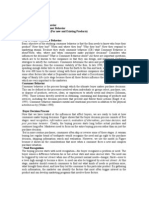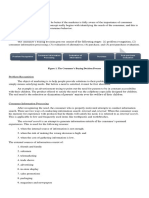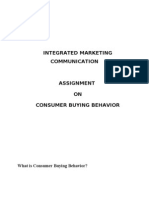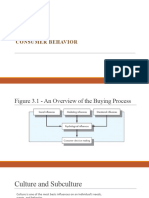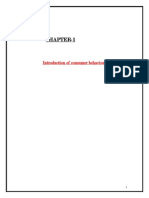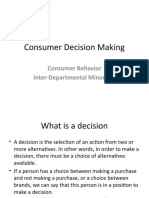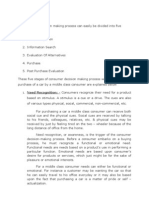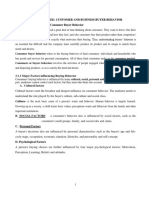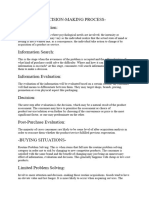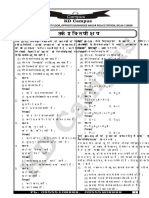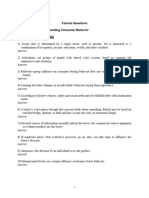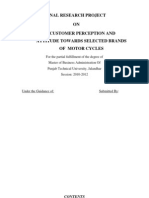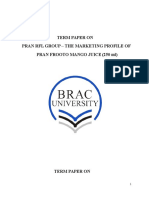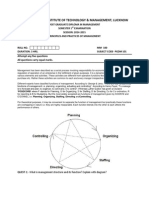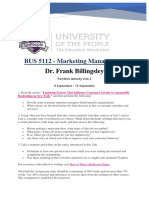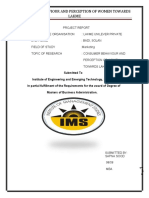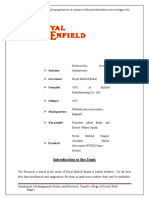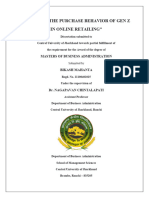0% found this document useful (0 votes)
31 views5 pagesBuying Decision Process
The buying decision process consists of five stages: problem recognition, information search, evaluation of alternatives, purchase decision, and post-purchase behavior. Consumers may skip or reverse stages based on their needs and experiences, and various factors influence their decisions, including attitudes, perceived risks, and marketing strategies. Post-purchase behavior is critical for marketers to monitor, as it affects customer satisfaction and future purchasing decisions.
Uploaded by
sachinerngdCopyright
© © All Rights Reserved
We take content rights seriously. If you suspect this is your content, claim it here.
Available Formats
Download as DOCX, PDF, TXT or read online on Scribd
0% found this document useful (0 votes)
31 views5 pagesBuying Decision Process
The buying decision process consists of five stages: problem recognition, information search, evaluation of alternatives, purchase decision, and post-purchase behavior. Consumers may skip or reverse stages based on their needs and experiences, and various factors influence their decisions, including attitudes, perceived risks, and marketing strategies. Post-purchase behavior is critical for marketers to monitor, as it affects customer satisfaction and future purchasing decisions.
Uploaded by
sachinerngdCopyright
© © All Rights Reserved
We take content rights seriously. If you suspect this is your content, claim it here.
Available Formats
Download as DOCX, PDF, TXT or read online on Scribd
/ 5

